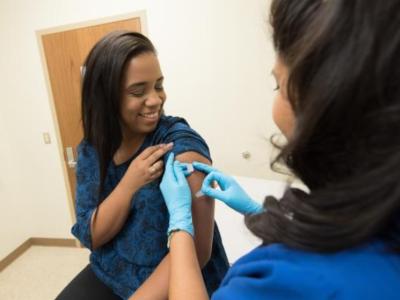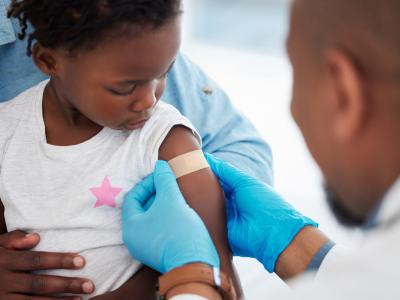Our weekly wrap-up of antimicrobial stewardship & antimicrobial resistance scans
NIAID funds development of test for detecting AMR genes
Originally published by CIDRAP News Jan 9
The National Institute of Allergy and Infectious Diseases (NIAID) has awarded $1.5 million to Phase Genomics of Seattle, Washington, to develop a low-cost, culture-free platform for detecting antimicrobial resistance (AMR) genes.
In a press release yesterday, the company said it will use its proprietary Hi-C technology and other proximity ligation methods to develop an AMR tracking kit and user-friendly web portal that can identify the hosts of AMR genes and analyze the transmission of antimicrobial resistance elements directly from complex microbial communities. The kit will be designed for use in clinical settings, as well as in AMR reservoirs like wastewater treatment plants and agricultural environments.
"This new grant enables the development of a new class of tools and methods for identifying antimicrobial resistance hosts and providing critical information for understanding the ecology of the transmission of AMR genes," said Ivan Liachko, PhD, founder and CEO of Phase Genomics.
The company said the platform will fill a technology gap, as current shotgun metagenomic methods fail to capture host-element information.
Jan 8 Phase Genomics press release
Company receives $1 million for respiratory infection diagnostics test
Originally published by CIDRAP News Jan 9
Fusion Genomics of Vancouver, British Columbia, today announced it has received $1 million in pharmacy-industry funding to conduct a clinical trial to assess its comprehensive, novel genomic diagnostics platform, which aims to help improve the diagnosis of respiratory tract infections (RTIs).
The study will be funded through the CQDM Quantum Leap program, which supports innovative technologies that facilitate drug discovery and development, the company said in a news release. CQDM is a pharmaceutical research consortium that has raised more than $90 million Canadian since 2008 from 13 drug companies and other partners.
The 1-year project will evaluate the ability of Fusion Genomics' ONETest, a next-generation-sequencing–based assay for infectious disease diagnosis, to identify pathogens responsible for RTIs in hospitals. The assay is designed to detect about 1,400 known pathogens simultaneously, which can help not only in saving patients but also in combatting antibiotic resistance.
"We are honored that CQDM has selected the ONETest RTI study as part of its prestigious portfolio of funded programs," said Mohammad Qadir, PhD, president and chief scientific officer of Fusion Genomics. "This study offers Fusion Genomics and our exceptional collaborators the opportunity to begin transforming the diagnosis of RTIs, and thereby reduce the tremendous burden of these infections on both patients and the hospitals that treat them."
Jan 9 Fusion Genomics news release
English health officials unveil strategy to contain CPE in hospitals
Originally published by CIDRAP News Jan 8
Public Health England (PHE) yesterday published a draft framework for healthcare providers on how to contain the spread of carbapenemase-producing Enterobacteriaceae (CPE) in hospitals.
Among the measures recommended is active screening for CPE among risk groups to minimize transmission from CPE-positive patients and reduce the risk that colonized patients will develop clinical infections. The document says that hospitals will need to develop their own risk assessment based on regional prevalence, patient mix, and connections to other healthcare providers. But it encourages screening for patients who have been previously identified as CPE-positive, been an inpatient in any hospital (both in the United Kingdom and abroad), had multiple hospital treatments, had known epidemiologic links to a CPE carrier, or been admitted to high-risk hospital units.
The framework also calls for appropriate surveillance systems to rapidly detect and monitor patients infected or colonized with CPE and hospital outbreaks, implementation of infection prevention and control practices, thorough environmental cleaning and decontamination processes to reduce CPE reservoirs, antimicrobial stewardship programs to reduce use of broad-spectrum antibiotics, optimized laboratory methods to detect carbapenemase-producing organisms, and support from hospital leadership.
"Unless action is taken, learning from experiences elsewhere in the world, rapid spread of CPE will pose an ever-increasing threat to public health and medical treatment pathways in the UK," the document states.
PHE says the framework is based on new evidence from the past 5 years, but it notes that the evidence base for some of the recommendations is limited. The comment period for the draft framework is open until Feb 14.
Jan 7 PHE draft framework
New strain of hypervirulent, carbapenem-resistant Klebsiella in China
Originally published by CIDRAP News Jan 8
An analysis of bloodstream infections caused by carbapenem-resistant Klebsiella pneumoniae (CRKP) in China has identified the emergence of a high-risk subclone of the most dominant CRKP clone in Asia, an international teams of researchers reported yesterday in Emerging Infectious Diseases.
The analysis of 203 CRKP isolates collected from patients with bloodstream infections at a Chinese hospital from January 2013 through June 2017 found that 174 (85.7%) belonged to sequence type (ST11), a clone that accounts for 60% of CRKP infections in Asia.
Whole-genome sequencing (WGS) further revealed the prevalence of two capsular types (KLs) among the ST11 isolates—KL47 and KL46—and showed that the ratio of KL47 to KL46 had decreased substantially during the study period, with KL46 becoming more prevalent over the 4 years. Analysis of 162 infected patients showed that patients with ST11-KL46 had significantly higher mortality rates than those with ST11-KL47 (62.2% vs 52.8%) and those with non-ST11 CRKP (62.2% vs 48.8%). The researchers suggest capsular switching in the ST11 population might contribute to the increased mortality.
WGS also revealed the presence of the virulence genes rmpA and rmpA2 in the ST11-KL46 isolates, and phenotypic tests demonstrated enhanced virulence. Phylogenetic reconstruction showed that ST11-KL46 may have emerged from an ST11-K47–like ancestor in 2011 through recombination events.
"In summary, our study identified the emergence of a high-risk subclone of CRKP-ST11, resulting in enhanced virulence and transmissibility," the authors write. "The newly emerging descendant obtained enhanced environmental survival and poses a substantial threat to healthcare networks, suggesting the urgent need for tailor-made surveillance and stricter infection-control measures to prevent further dissemination in nosocomial settings."
Jan 7 Emerg Infect Dis study
CARB-X funds research on new drug class targeting resistant bacteria
Originally published by CIDRAP News Jan 8
CARB-X today said it has awarded TAXIS Pharmaceuticals of Mammoth Junction, New Jersey, up to $3.2 million to develop efflux pump inhibitors (EPIs), a new drug class designed to destroy a major mechanism of multidrug-resistant (MDR) Pseudomonas aeruginosa bacteria.
"Pseudomonas aeruginosa is an intrinsically resistant pathogen, with a nearly impermeable outer membrane and with the ability to turn on many efflux pumps to eject antibiotics that make it through," Erin Duffy, PhD, chief of research and development at CARB-X, which is based at Boston University, said in a CARB-X news release. "The TAXIS project is in the early stages of development but if successful, it would potentially be a leap forward in combating drug-resistance mechanisms and restoring the utility of many existing antibiotics."
TAXIS is eligible for up to $11.4 million in addition funding if the company achieves certain milestones. The EPIs it is developing are designed to disable P aeruginosa efflux pumps, which flush out antibiotics from the cell to protect the MDR bacteria from the drugs. TAXIS researchers are focusing on hospital-acquired and ventilator-related infections.
Greg Mario, MBA, CEO of TAXIS Pharmaceuticals, said, "This new drug class is designed to enable the reuse of existing generic antibiotics by addressing an elemental form of drug resistance."
Since it began in 2016, CARB-X (the Combating Antibiotic-Resistant Bacteria Biopharmaceutical Accelerator), a public-private partnership, has announced 54 awards of more than $179 million total. It plans to invest $500 million for promising approaches to combat antibiotic resistance by the end of next year.
Jan 8 CARB-X news release
CARB-X to fund novel immunotherapy for gram-negative bacteria
Originally published by CIDRAP News Jan 7
CARB-X today announced an award of up to $1.4 million to Centauri Therapeutics of Sandwich, UK, for the development of ABX01, a novel immunotherapy designed to treat infections caused by gram-negative pathogens.
ABX01 targets drug-resistant strains of Enterobacteriaceae, P aeruginosa, and Acinetobacter baumannii with a direct and immune-mediated mechanism that harnesses and re-directs naturally occurring effector antibodies in the body to kill the harmful bacteria. The company says the award will help advance the program, which is currently in the lead optimization phase of development.
"ABX01 is highly differentiated from other products targeting this area and this funding will help to accelerate its progression in an area of significant and growing unmet need," Centauri Therapeutics CEO Mike Westby, PhD, said in a press release from CARB-X (the Combating Antibiotic-Resistant Bacteria Biopharmaceutical Accelerator).
ABX01 is the 53rd antibacterial project funded by CARB-X since in launched in 2016
Jan 7 CARB-X press release
Antibiotics, asthma meds often co-prescribed for respiratory infections
Originally published by CIDRAP News Jan 7
An investigation of health records of patients in the United Kingdom diagnosed with acute lower respiratory tract infections (ALRTIs) has found that antibiotics for the condition are overprescribed irrespective of asthma status, and that clinicians frequently co-prescribe antibiotics and asthma medication, British researchers reported yesterday in Respiratory Research.
The retrospective study, conducted by researchers from the University of Bristol, analyzed electronic health records from 650 UK general practices, focusing on patients over 12 diagnosed with an ALRTI from January 2014 through December 2015. The aim of the study was to describe the frequency and variation of antibiotic and asthma medication prescribing following an ALRTI diagnosis, and investigate factors associated with prescribing among patients with and without asthma. Although British Thoracic Society guidelines state that acute asthma exacerbations should be treated with steroids and not antibiotics, guidance on ALRTI treatment in patients with asthma is unclear, the authors of the paper said.
Of the 110,418 patients diagnosed with an ALRTI, 17,952 (16%) had asthma; 81% and 79% of the patients with and without asthma received antibiotics, respectively, while 41% and 15% received asthma medication. For 90.5% of ALRTI episodes prescribed an asthma medication, patients were also given an antibiotic. There was variation in the frequency of antibiotic and asthma medication prescribing across practices.
Among the independent predictors of antibiotic prescribing among patients with asthma was the number of prior antibiotic prescriptions for any clinical indication. Patients who had received three or more prior antibiotic prescriptions, compared to those who had received one, were more likely to get an antibiotic prescription (odds ratio [OR], 1.28; 95% confidence interval [CI], 1.04 to 1.57). Higher practice ALRTI prescribing was also positively associated with antibiotic prescribing for asthma patients (OR, 1.47; 95% CI, 1.35 to 1.60).
"We have demonstrated high-use of antibiotics and asthma medication for the treatment of ALRTI in patients with and without asthma, respectively, with considerable between-practice variation," the authors concluded. "Further research is urgently needed to inform optimum use of both antibiotics and asthma medication for patients with ALRTI."
Jan 6 Respir Res study
Review: Pediatric stewardship programs have impact, but mainly in US
Originally published by CIDRAP News Jan 6
A systematic review of 113 studies indicates that pediatric antimicrobial stewardship programs (ASPs) have a significant impact on the reduction of targeted and empiric antibiotic use, costs, and antimicrobial resistance in both inpatient and outpatient settings, researchers reported late last week in Antimicrobial Resistance and Infection Control.
Of the 41,916 studies screened from three databases by the team of Italian, US, and UK researchers, 113 were eligible for inclusion in the review. Most of the studies (98/113, 86.7%) were conducted in high-income countries, with more than half (59/113, 52.2%) describing ASPs implemented in US hospitals; the rest covered ASPs implemented in Europe (28/113, 24.4%) and Asia (20/113, 17.7%). Seventy-four (65.5%) studies used a before-and-after design, and sixteen (14.1%) were randomized trials. The vast majority (81.4%) described in-hospital ASPs with half of interventions in mixed pediatric wards and 10 (8.8%) in emergency departments.
Ninety of the studies (79.6%) showed a significant reduction in inappropriate antibiotic prescriptions, and 18 (15.9%) showed that compliance after ASP implementation increased. Sixteen of the included studies (14.2%) quantified cost savings related to the intervention with most of the decreases due to lower rates of drug administration. Of the 12 studies that analyzed changes in antibiotic resistance following ASP implementation, 7 showed an increased susceptibility of the bacteria analyzed.
The most interesting results observed in these studies were a decrease in extended spectrum beta-lactamase producers Escherichia coli and K pneumoniae; a reduction in the rate of P aeruginosa carbapenem resistance subsequent to an observed reduction in the rate of antimicrobial days of therapy; and, in two studies set in outpatient setting, an increase in erythromycin-sensitive Streptococcus pyogenes following a reduction in the use of macrolides.
The authors of the review note that while pediatric ASPs have become widespread in the United States, their findings indicate that uptake in Europe, Asia, and Africa is limited, possibly because guidelines developed by the Infectious Diseases Society of America and the Society for Healthcare Epidemiology of America are designed for the US healthcare system. They conclude that further efforts in developing pediatric ASPs are needed.
Jan 3 Antimicrob Resist Infect Control study
High CRE burden found in Egyptian hospitals
Originally published by CIDRAP News Jan 6
In another study published in Antimicrobial Resistance and Infection Control, a team of US and Egyptian researchers reported a high and increasing burden of carbapenem-resistant Enterobacteriaceae (CRE) in Egyptian intensive care units (ICUs).
Using data from Egypt's healthcare-associated infection (HAI) surveillance program, researchers from the US Centers for Disease Control and Prevention (CDC) and several Egyptian universities analyzed isolates from HAI cases that were reported from 2011 through 2017 and caused by Enterobacteriaceae pathogens (Klebsiella spp, E coli, and Enterobacter spp). Overall, there were 1,598 Enterobacteriacea HAI cases, of which 871 (54.1%) were carbapenem resistant. The most common pathogen for CRE cases was Klebsiella (85.1%), followed by E coli (10.2%) and Enterobacter(4.7%).
The proportion of cases that were CRE rose from 17.6% in 2011 to 54.6% in 2017 (P = 0.003). The overall incidence of HAI due to CRE was 3.7 per 10,000 patient-days. Among the 72 hospitals performing HAI surveillance, 46 (63.9%) reported at least one CRE isolate during the study period. Multivariate regression analysis demonstrated that carbapenem resistance was associated with specimen type, pathogen, location prior to admission, and length of ICU stay.
The authors of the study say the high prevalence of CREs in Egyptian hospitals may result from limitations in implementing ASPs and infection prevention and control (IPC) measures.
"Future implementation of evidence-based IPC strategies to prevent CRE transmission, strengthening microbiology capacity and molecular characterization in addition to including antibiotic stewardship programs, are needed to reduce the burden of CRE and optimize patient treatment strategies," they conclude.
Jan 3 Antimicrob Resist Infect Control study
Targeted approach helps reduce C diff rates in VA hospitals, study finds
Originally published by CIDRAP News Jan 6
Development of a metric to target healthcare facilities where a Clostridioides difficile infection (CDI) prevention initiative would have the most impact helped the Veterans Affairs (VA) healthcare system achieve its CDI reduction goals, researchers reported late last week in Infection Control and Hospital Epidemiology.
To evaluate the performance of the VA's CDI prevention initiative, which was launched in 2012 with the aim of reducing hospital-onset healthcare-facility–associated (HO-HCFA) CDI cases nationwide by 30% within 2 years, researchers have used standardized infection ratios (SIRs), a metric that accounts for differences between facilities and allows for interfacility comparisons. But while SIRs show performance relative to a pre-intervention baseline, they don't provide insight into where resources for additional investment should be targeted for the greatest impact on overall CDI rates. Based on SIRs, HO-HCFA CDI rates in VA facilities declined by only 15% from July 2012 through March 2015.
To determine where resources would best be allocated, VA researchers calculated the cumulative attributable difference (CAD) between facilities, which translates SIRs into an absolute number of infections that must be achieved to reach a pre-specified reduction goal. They then ranked the VA facilities with the 10 highest CAD values and targeted them for periodic conference calls or site visits from January 2016 through September 2019. After implementation of the quality improvement program in the 10 hospitals, the HO-HCFA CDI rate declined by 56%, compared with 44% in the 117 non-intervention VA facilities. That helped the VA achieve a HO-HCFA CDI decline of 37% since 2012.
The authors of the study say that no novel interventions or changes in definitions or testing methods were introduced that could explain the dramatic downturn in CDI rates after implementation of the quality improvement program.
"We achieved a statistically significant decline in CDI rates nationwide coincident with application of the CAD approach to our process improvement program," the authors of the study write. "Focusing on facilities with a larger burden of HAIs [healthcare-associated infections], as identified by the CAD analysis, might make better use of process improvement resources in a large healthcare system; this is a low-cost intervention that is not labor intensive."
Jan 3 Infect Control Hosp Epidemiol abstract










